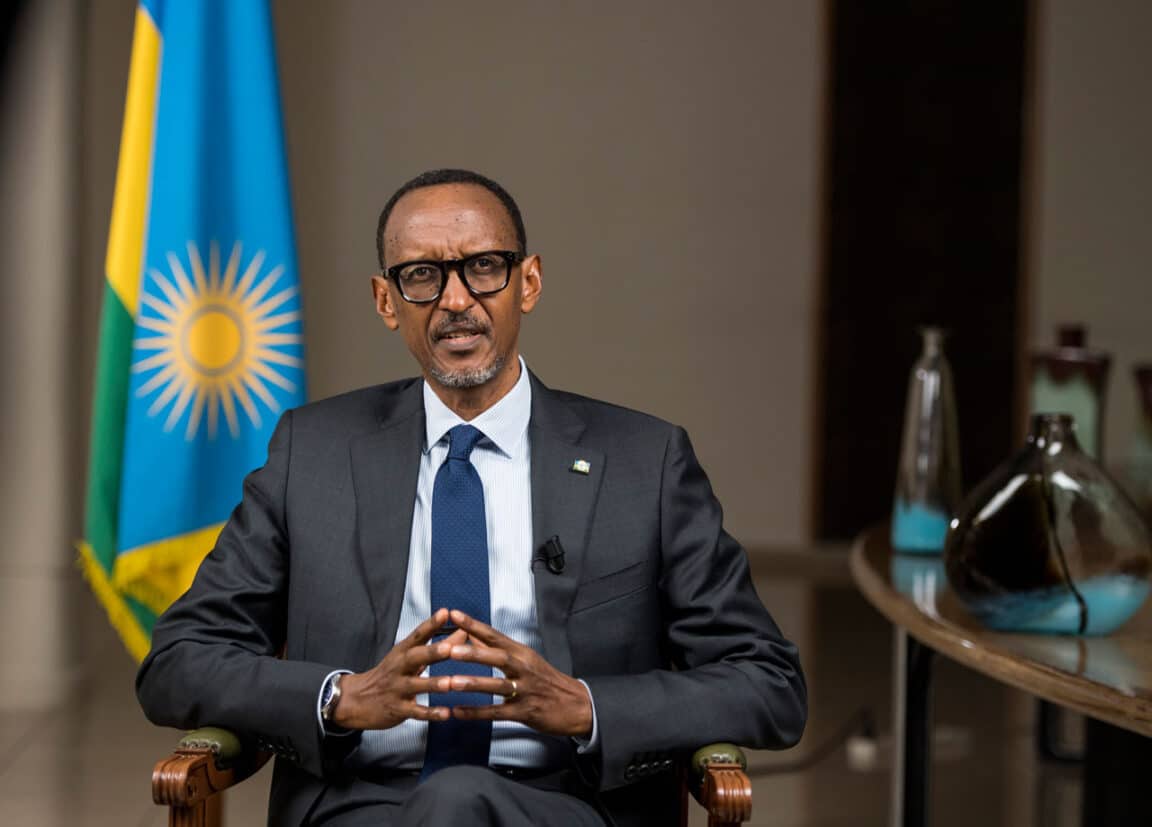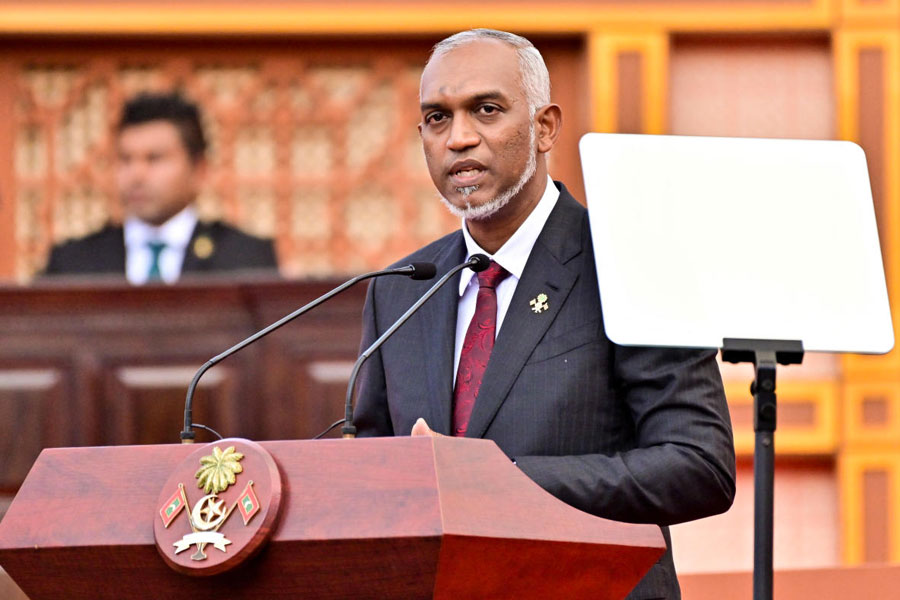Blood coursed through the streets of Rwanda’s capital, Kigali, in April 1994 as machete-wielding militiamen began a campaign of genocide that killed as many as 800,000 people, one of the great horrors of the late 20th century.
Thirty years later, Kigali is the envy of Africa. Smooth streets curl past gleaming towers that hold banks, luxury hotels and tech startups. There is a Volkswagen car plant and an mRNA vaccine facility. A 10,000-seat arena hosts Africa’s biggest basketball league and concerts by stars such as Kendrick Lamar, an American rapper, who performed there in December.
Tourists fly in to visit Rwanda’s famed gorillas. Government officials from other African countries arrive for lessons in good governance. The electricity is reliable. Traffic cops do not solicit bribes. Violence is rare.
The architect of this stunning transformation, President Paul Kagame, achieved it with harsh methods that would normally attract international condemnation. Opponents are jailed, free speech is curtailed and critics often die in murky circumstances, even those living in the West. Kagame’s soldiers have been accused of massacre and plunder in neighboring Congo.
For decades, Western leaders have looked past Kagame’s abuses. Some have expressed guilt for their failure to halt the genocide, when Hutu extremists massacred people mostly from Kagame’s Tutsi ethnic group. Rwanda’s tragic history makes it an “immensely special case,” Tony Blair, the former British prime minister, once said.
Kagame will commemorate the 30th anniversary of the genocide Sunday, when he is expected to lay wreaths at mass graves, light a flame of remembrance and deliver a solemn speech that may well reinforce his message of exceptionalism. “Never again,” he often says.
But the anniversary is also a sharp reminder that Kagame, 66, has been in power for just as long. He won the last presidential election with 99% of votes. The outcome of the next one, scheduled for July, is in little doubt. Under Rwanda’s Constitution, he could rule for another decade.
The milepost has given new ammunition to critics who say that Kagame’s repressive tactics, previously seen as necessary — even by critics — to stabilize Rwanda after the genocide, increasingly appear to be a way for him to entrench his iron rule.
Questions are also growing about where he is leading his country. Although he claims to have effectively banished ethnicity from Rwanda, critics — including diplomats, former government officials and many other Rwandans — say he presides over a system that is shaped by unspoken ethnic cleavages that make the prospect of genuine reconciliation seem as distant as ever.
A spokesperson for Rwanda’s government did not respond to questions for this article. Authorities declined accreditation to me to enter the country. A second New York Times reporter has been allowed in.
Ethnic Tutsis dominate the top echelons of Kagame’s government, while the Hutus, who make up 85% of the population, remain excluded from true power, critics say. It is a sign that ethnic division, despite surface appearances, is still very much a factor in the way Rwanda is ruled.
“The Kagame regime is creating the very conditions that cause political violence in our country,” Victoire Ingabire Umuhoza, his most prominent political opponent, said by phone from Kigali. “Lack of democracy, absence of rule of law, social and political exclusion — it’s the same problems we had before.”
Ingabire, a Hutu, returned to Rwanda from exile in 2010 to run against Kagame for president. She lost, and months later was imprisoned on charges of conspiracy and terrorism. Released in 2018, when Kagame pardoned her, Ingabire cannot travel abroad and is barred from standing in the election in July.
“I agree with those who say Rwanda needed a strongman ruler after the genocide, to bring order in our country, ” she said. “But today, after 30 years, we need strong institutions more than we need strong men.”
Kagame burst into power in July 1994, sweeping into Kigali at the head of a Tutsi-dominated rebel group, the Rwandan Patriotic Front, which ousted the Hutu extremists who orchestrated the genocide.
Since coming to power, Kagame has had a reputation for spending aid wisely and promoting forward-looking economic policies. Although former aides have accused him of manipulating official statistics to exaggerate progress, Rwanda’s trajectory is impressive: Average life expectancy rose to 66 years from 40 years between 1994 and 2021, the United Nations says.
One of Kagame’s first acts was to publicly erase the dangerous divisions that had fueled the genocide. He banned the terms Hutu and Tutsi from identity cards and effectively criminalized public discussion of ethnicity. “We are all Rwandan” became the national motto. But in reality, ethnicity continued to suffuse nearly every aspect of life, reinforced by Kagame’s policies. “Everyone knows who is who,” said Joseph Sebarenzi, a Tutsi who served as the president of Rwanda’s Parliament until 2000, when he fled into exile.
A survey published last year by Filip Reyntjens, a Belgian professor and an outspoken Kagame critic, found that 82% of 199 top government positions were held by ethnic Tutsi, and nearly 100% in Kagame’s office.
American diplomats reached a similar conclusion in 2008, after conducting their own survey of Rwanda’s power structure. Kagame “must begin to share authority with Hutus to a much greater degree” if his country were to surmount the divides of the genocide, the U.S. Embassy wrote in a cable that was later published by WikiLeaks.
Critics accuse Kagame of using the memory of the events of 1994 to suppress the Hutu majority. Official commemorations mention “the genocide of the Tutsi” but play down or ignore the tens of thousands of moderate Hutus who were also killed, often trying to save their Tutsi neighbors.
A perception of selective justice rubs salt into those wounds. Kagame’s troops killed 25,000 to 45,000 people, mostly Hutu civilians, from April to August 1994, according to disputed U.N. findings. Yet fewer than 40 of his officers have been tried for those crimes, according to Human Rights Watch.
The Hutu killings are incomparable in scale or nature to the genocide. But Kagame’s lopsided approach to dealing with those events is hampering Rwandans’ ability to reconcile and move on, critics say.
“Anyone not familiar with Rwanda might think that everything is fine,” Sebarenzi said. “People work together, they go to church together, they do business together. That is good. But under the carpet, those ethnic divisions are still there.”
Although Kagame has appointed Hutus to senior positions in government since 1994, including prime minister and defense minister, those appointees have little real power, said Omar Khalfan, a former official with Rwanda’s national intelligence service who fled into exile in the United States in 2015. Tutsi loyalists are planted in the offices of senior Hutus to keep an eye on them, said Khalfan, a Tutsi. “The regime doesn’t want to speak about ethnicity because it raises the issue of power-sharing,” he said. “And they don’t want that.”
The New York Times News Service










